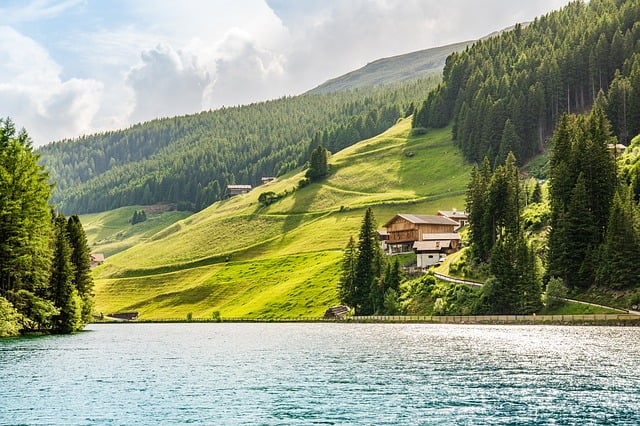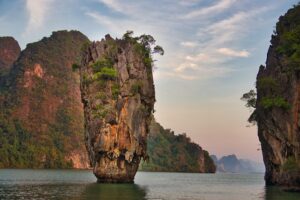The Swiss Alps, with their soaring peaks, pristine landscapes, and snow-draped valleys, epitomize the essence of a winter wonderland. This majestic mountain range, stretching across Switzerland and beyond, has captivated adventurers, nature lovers, and travelers alike for centuries. Whether you’re drawn to the Alps for their natural beauty, thrilling winter sports, or rich cultural history, this magical destination offers something for everyone.
Table of Contents
ToggleGeography of the Swiss Alps
The Swiss Alps cover a vast region, constituting roughly 60% of Switzerland’s total land area. This awe-inspiring mountain range forms part of the greater Alpine system that spans eight countries, but it is in Switzerland where the Alps reach their highest peaks and most iconic vistas. Among these are the Dufourspitze in the Monte Rosa massif, the Matterhorn, and the Jungfrau, which stand as towering giants, offering stunning views and challenging ascents for mountaineers.
The topography of the Swiss Alps is characterized by dramatic changes in elevation, with deep valleys carved by glaciers over millennia, rugged mountain ridges, and broad alpine meadows. The diverse landscape makes the region not only a haven for winter sports but also a breathtaking destination for those seeking solace and serenity amidst nature.
Climate and Weather
Winter in the Swiss Alps transforms the region into a snowy paradise. The Alps experience a continental climate, with cold winters and heavy snowfall that blankets the mountains from November to April. The higher you go, the more severe the conditions, with sub-zero temperatures and snow-covered peaks that seem to touch the sky. However, the Alps’ diverse microclimates mean that different regions can experience varying weather patterns simultaneously. For instance, while one valley might be buried under snow, another nearby could bask in the sun.
The impact of altitude on weather is profound. As you ascend, temperatures drop, and conditions become more extreme, making the Swiss Alps both a beautiful and challenging environment. Visitors should be prepared for sudden changes in weather, which can shift from bright sunshine to heavy snowfall within minutes.
Historical Significance
The Swiss Alps have been inhabited and traversed for thousands of years, with early settlements dating back to the Neolithic period. Over time, these mountains have played a crucial role in shaping Swiss culture and identity. The challenging terrain fostered a sense of resilience and self-sufficiency among the people who called the Alps home, influencing everything from architecture to traditions.
Historically, the Alps were both a barrier and a bridge, separating different regions while also serving as a corridor for trade and cultural exchange. The Alpine passes, such as the St. Gotthard and Simplon, have been vital routes for commerce and migration since Roman times, linking northern and southern Europe.
Alpine Flora and Fauna
Despite the harsh winter conditions, the Swiss Alps are home to a remarkable variety of flora and fauna that have adapted to survive in this challenging environment. In winter, the landscape may seem barren, but beneath the snow lie hardy plants such as edelweiss and alpine rose, waiting to bloom once the snow melts.
Wildlife in the Swiss Alps is equally resilient. Species like the Alpine ibex, chamois, and marmot are well-adapted to the cold, with thick fur and the ability to forage for food in the snow. Birds such as the golden eagle and snow finch can be spotted soaring above the peaks, while elusive predators like the lynx and fox make their way through the forests.
Conservation efforts in the Alps are crucial to preserving this delicate ecosystem. Many areas are now protected as national parks or nature reserves, ensuring that the unique biodiversity of the Alps can thrive for generations to come.
Winter Sports and Recreation

The Swiss Alps are synonymous with winter sports, and for good reason. With some of the world’s most famous ski resorts, the region attracts skiers and snowboarders from around the globe. Zermatt, Verbier, and St. Moritz are just a few of the legendary destinations where visitors can carve down pristine slopes, enjoy après-ski, and revel in the alpine atmosphere.
Beyond skiing and snowboarding, the Alps offer a plethora of other winter activities. Snowshoeing, ice skating, and sledding are popular alternatives for those who prefer a slower pace. For the adventurous, there are opportunities to try ice climbing, paragliding over snowy peaks, or even heli-skiing, where a helicopter drops you off on a remote mountain for an unforgettable descent.
Famous Destinations
Among the many jewels of the Swiss Alps, a few stand out as must-visit destinations. Zermatt, with the iconic Matterhorn looming above, is perhaps the most famous of all. This car-free village offers world-class skiing and a charming alpine ambiance that feels like stepping into a fairy tale.
St. Moritz, known as the birthplace of winter tourism, is another top destination. Its blend of luxury, tradition, and breathtaking scenery has made it a favorite among the global elite. The town also boasts a rich history of winter sports, having hosted the Winter Olympics twice.
For those seeking natural beauty and tranquility, the Jungfrau region, a UNESCO World Heritage site, offers unparalleled vistas of snow-capped mountains and deep valleys. The villages of Grindelwald, Wengen, and Lauterbrunnen are perfect bases for exploring this stunning area.
Adventure Tourism in the Swiss Alps
While skiing and snowboarding are the main draws, the Swiss Alps also cater to thrill-seekers looking for more extreme adventures. Mountaineering in the winter, though challenging, offers a chance to conquer some of the most famous peaks in Europe. Ice climbing, whether on frozen waterfalls or glacier walls, is another exhilarating experience that tests both physical and mental strength.
Paragliding over snow-covered landscapes provides a unique perspective of the Alps, combining the thrill of flight with the serenity of floating above the mountains. Guided winter hikes, often equipped with crampons and ice axes, allow adventurers to explore the more remote and rugged parts of the Alps under the safety of experienced guides.
Swiss Alpine Villages
The villages scattered throughout the Swiss Alps are like postcards come to life. These quaint settlements, with their traditional wooden chalets and snow-covered rooftops, embody the charm of alpine life. Each village has its own unique character, but all share a strong sense of community and a deep connection to the surrounding mountains.
Grindelwald, located in the Bernese Alps, is one of the most picturesque villages, offering stunning views of the Eiger and easy access to the Jungfrau region. Lauterbrunnen, set in a valley of 72 waterfalls, feels like a hidden paradise, with its dramatic cliffs and tranquil atmosphere. Gstaad, known for its luxury and elegance, attracts celebrities and royalty but retains a genuine Swiss charm.
The lifestyle in these villages is deeply rooted in tradition, with festivals, crafts, and local cuisine playing a central role in daily life. Visitors can immerse themselves in the culture by staying in family-run guesthouses, attending local events, and sampling homemade delicacies.
Alpine Cuisine
Winter in the Swiss Alps is not just about outdoor activities; it’s also a time to indulge in hearty alpine cuisine. Traditional dishes are designed to warm the body and soul, with ingredients that reflect the region’s agricultural heritage.
Fondue, the quintessential Swiss dish, is a must-try in the Alps. This communal pot of melted cheese, served with bread cubes, is perfect for sharing after a day on the slopes. Raclette, another cheese-based dish, involves melting cheese over potatoes and pickles, offering a simple yet satisfying meal.
Rösti, a crispy potato dish, is often served with sausages or eggs, while hearty stews like Zürcher Geschnetzeltes provide a comforting option. For dessert, indulge in Swiss chocolate or a slice of apple strudel, paired with a cup of hot chocolate or mulled wine.
Dining in the Swiss Alps is often a cozy affair, with many restaurants housed in traditional chalets or mountain huts. The warmth of a crackling fire, the scent of pinewood, and the taste of locally sourced ingredients make for an unforgettable culinary experience.
Winter Festivals and Events
The Swiss Alps come alive in winter not just with snow and sports, but also with vibrant festivals and events that celebrate the season. From Christmas markets to snow sculpture competitions, there’s always something happening to add a festive touch to your visit.
Christmas markets are a highlight of the winter season, with towns and villages transformed into fairy-tale settings adorned with lights, decorations, and stalls selling handmade crafts and seasonal treats. The Montreux Christmas Market, located along Lake Geneva with the Alps as a backdrop, is one of the most famous in the region.
In addition to markets, the Swiss Alps host a variety of winter festivals, such as the International Hot-Air Balloon Festival in Château-d’Oex, where colorful balloons fill the sky against the snowy landscape. Snow and ice sculpture competitions, like the World Snow Festival in Grindelwald, showcase the incredible creativity of artists who carve intricate designs out of frozen blocks.
Wellness and Relaxation
Amidst the excitement of winter sports and festivals, the Swiss Alps also offer ample opportunities for relaxation and wellness. Alpine spas and thermal baths provide a perfect escape from the cold, where you can soak in warm, mineral-rich waters while gazing at the snow-covered peaks.
Wellness retreats in the Alps often focus on the healing properties of the natural environment, combining spa treatments with outdoor activities like snow yoga, meditation, and forest bathing. The crisp mountain air, peaceful surroundings, and therapeutic hot springs create an ideal setting for rejuvenation and self-care.
Many luxury hotels in the Alps offer wellness packages that include massages, facials, and other treatments designed to refresh both body and mind. Whether you’re looking to unwind after a day on the slopes or simply want to enjoy some pampering, the Swiss Alps provide the perfect backdrop for relaxation.
Sustainability and Eco-Tourism
As one of the most beautiful and ecologically sensitive regions in the world, the Swiss Alps face significant challenges due to climate change and tourism. However, Switzerland is at the forefront of sustainability efforts, with numerous initiatives aimed at preserving the natural environment and promoting eco-friendly tourism.
Many ski resorts in the Alps are adopting green practices, such as using renewable energy, reducing waste, and promoting responsible travel. Some resorts have even achieved carbon-neutral status, ensuring that their operations have minimal impact on the environment.
Eco-tourism in the Alps also extends to conservation projects that protect local wildlife and habitats. Visitors can participate in guided eco-tours that highlight the region’s biodiversity and teach sustainable travel practices. Supporting local businesses, staying in eco-friendly accommodations, and respecting the natural environment are all ways travelers can contribute to the preservation of the Swiss Alps.
Photography and Filmmaking in the Alps
The Swiss Alps, with their dramatic landscapes and ever-changing light, are a photographer’s dream. Whether you’re capturing the sunrise over a snowy peak or the reflection of a mountain in a frozen lake, the opportunities for stunning shots are endless.
The Alps have also served as the backdrop for numerous iconic films, from the classic “The Sound of Music” to James Bond’s “On Her Majesty’s Secret Service.” Filmmakers are drawn to the region’s natural beauty and its ability to evoke both awe and serenity.
For amateur photographers, the key to capturing the perfect shot in the Alps is timing. Early mornings and late afternoons offer the best light, while winter’s shorter days mean you’ll need to plan your shoots carefully. Don’t forget to protect your camera equipment from the cold, and always be mindful of your surroundings, especially in snowy and icy conditions.
Travel Tips and Planning
Planning a trip to the Swiss Alps in winter requires careful consideration, especially if you’re visiting for the first time. The best time to experience the winter wonderland is from December to February, when the snow is at its peak and the resorts are in full swing.
Getting to the Swiss Alps is relatively easy, with Switzerland’s efficient transport system offering numerous options. Major cities like Zurich, Geneva, and Bern serve as gateways to the mountains, with trains and buses connecting travelers to their destinations. For those looking for a scenic journey, the Glacier Express and Bernina Express are two of the most famous train routes in the Alps.
When packing for a winter trip, be sure to bring warm, layered clothing, waterproof boots, and accessories like gloves and hats to protect against the cold. If you’re planning on skiing or snowboarding, you can rent equipment at most resorts, but having your own gear can enhance the experience.
Finally, remember that the Swiss Alps cater to all types of travelers, from luxury seekers to budget-conscious adventurers. Whether you’re staying in a five-star hotel or a cozy guesthouse, the key is to plan ahead and make the most of your time in this enchanting region.
FAQs
- What are the best months to visit the Swiss Alps in winter? The best months to visit the Swiss Alps in winter are December to February when the snow is at its peak, and the ski resorts are fully operational.
- Is it safe to travel to the Swiss Alps in winter? Yes, it is safe to travel to the Swiss Alps in winter, but it’s important to be prepared for winter weather conditions, including cold temperatures and potential snowstorms. Always check weather forecasts and follow safety guidelines.
- How do I prepare for a winter trip to the Alps? Prepare by packing appropriate winter clothing, booking accommodations in advance, and familiarizing yourself with the activities and weather conditions in the area you’re visiting.
- What are the best family-friendly activities in the Swiss Alps? Family-friendly activities include skiing, sledding, ice skating, and visiting Christmas markets. Many resorts also offer children’s programs and beginner-friendly slopes.
- Can beginners enjoy winter sports in the Swiss Alps? Absolutely! The Swiss Alps have many ski resorts that cater to beginners, offering lessons, gentle slopes, and easy-to-navigate trails.
- Are there budget-friendly options for visiting the Swiss Alps? Yes, while the Swiss Alps are known for luxury, there are budget-friendly options such as staying in guesthouses, eating at local restaurants, and exploring free outdoor activities like snowshoeing or hiking.
Conclusion
The Swiss Alps truly embody the serene majesty of a winter wonderland. From towering peaks and endless snow-covered landscapes to charming villages and exhilarating winter sports, the Alps offer an experience that is both breathtaking and unforgettable. Whether you’re seeking adventure, relaxation, or a deep connection with nature, the Swiss Alps in winter promise to deliver all this and more.


